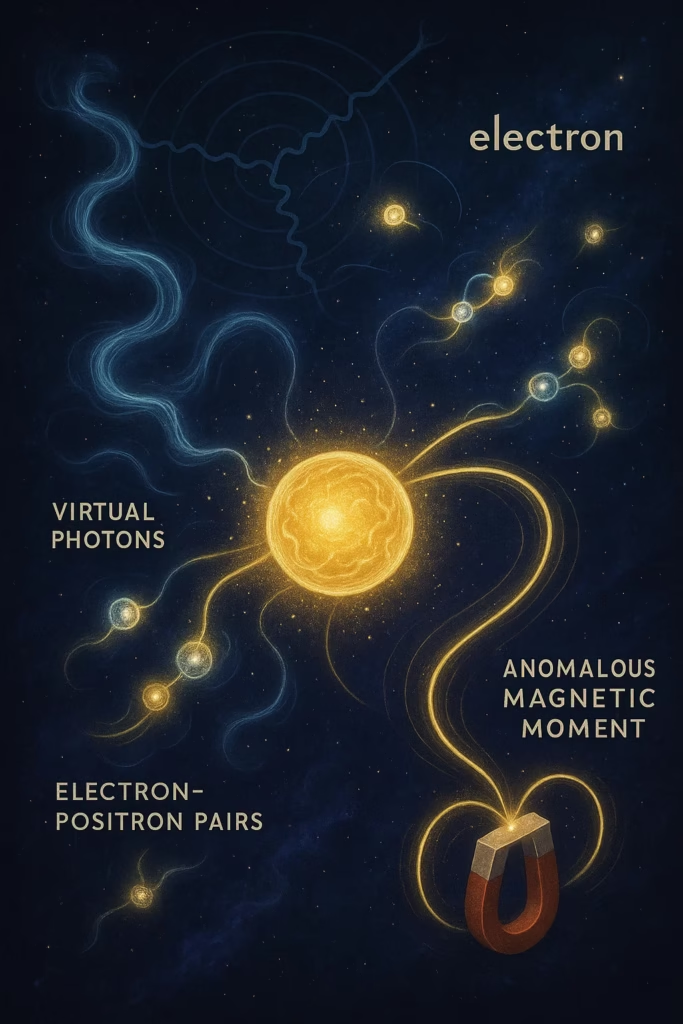🔬 The Electron’s Magnetic Moment: Dirac’s Predictions and Experimental Challenges
The Dirac equation revolutionized the description of the electron by introducing spin – an intrinsic quantum property with no classical analogue. Spin is not a rotation about an axis (that would require speeds greater than the speed of light!), but a fundamental property that explains magnetic effects. Dirac predicted that the electron has a magnetic moment:
μ = (eℏ)/(2m)
However, precise measurements in 1948 (conducted by Julian Schwinger) revealed a small but measurable deviation from this value. This was a direct call to arms for quantum electrodynamics (QED).
⚛️ QED to the Rescue: Virtual Photons and “Immoral” Shortcuts
According to QED, the electron does not interact with a magnetic field only directly. It does so through a series of additional processes involving virtual photons and particles:
- The electron emits a virtual photon, then absorbs it – Feynman jokingly called these “immoral” shortcuts.
- The electron emits a virtual electron-positron pair, which then annihilates.
- Even the emission of multiple photons during the interaction.
🧩 The more alternative paths we calculate, the closer the result is to the experiment.
QED sums the probabilities of all possible scenarios (including those that seem exotic). When all contributions up to the 12th order of accuracy are included, theory and experiment match to 12 decimal places – the most precise agreement in the history of physics!
🎯 Electron Spin: Fermions That Don’t Like to Mix
Electrons have a spin of ±½ℏ and belong to the group of fermions. Their key characteristic is the Pauli Exclusion Principle:
“Two electrons cannot occupy the same quantum state with the same spin.”
This explains:
- The arrangement of electrons in atoms → the chemical properties of matter
- The stability of matter → why electrons don’t collapse into the nucleus
🌈 Photon Spin: Bosons That Love to Socialize
Photons have a spin of ±1ℏ (an integer value) and belong to bosons. For them, the completely opposite rule applies:
“Photons can occupy the same quantum state in unlimited numbers.”
This is the foundation of:
- Stimulated emission (Einstein) → lasers
- Light polarization → the direction of oscillation of the electric field
🔍 Polarization is a direct consequence of photon spin:
- Linearly polarized photons: spin +1ℏ or -1ℏ
- Circularly polarized: a superposition of both states
🚀 Significance: Why is This a Revolution?
QED has shown us that:
- Virtual processes are not mathematical fantasies – they have measurable effects.
- Nature is richer than our wildest assumptions – electrons “cheat” through virtual particles.
- Precision is not impossible – even when dealing with infinities, renormalization saves the day.
🔮 What’s Next? Superluminal Photons and Time Travel!
In the next post:
- How can photons apparently exceed the speed of light?
- Why do Feynman’s equations allow particles to travel backward in time?
- How is a positron actually an electron moving backward in time?
Stay with us – the journey through the quantum world is getting weirder!


Leave a Reply